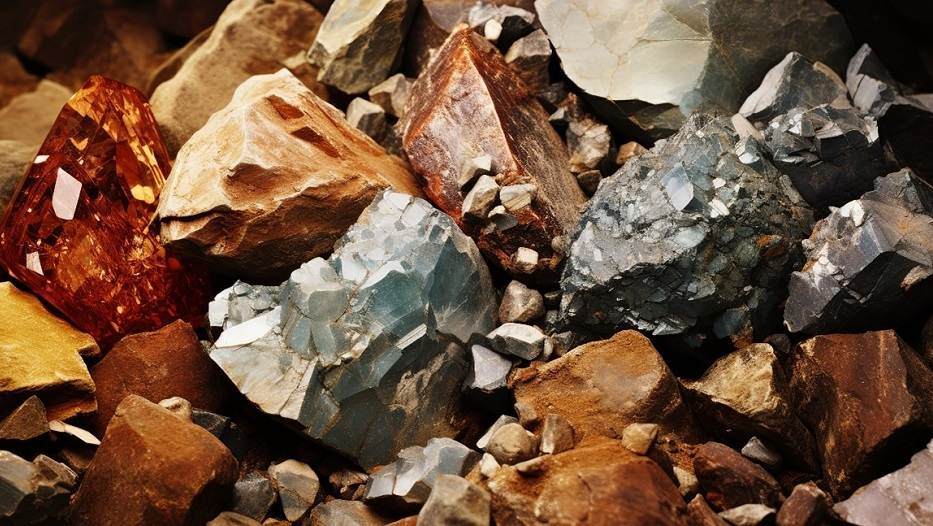Cristina Leon Vera | 03/10/2023
Rare Earths are key elements for industries as important as the automotive or energy industries, so existing reserves and their market are of interest to the world’s great powers.
Although Rare Earths remain practically the same as when we reported about them in a 2019 article, the truth is that the landscape has evolved in these three years of development of these materials. Their main value lies in their exceptional magnetic, luminescent and electrochemical properties, which is why they are used in various sectors. And these much sought-after elements can be found in everyday objects such as headphones, sensors or protective goggles.
Rare Earths in figures
In 2019, global production of Rare Earth oxides was estimated to be in the range of 160,000 tons per year (t/year), of which 95% came from China, and reserves (mostly located in that country) were estimated to be between 80 and 120 million tons (Mt).
Production and reserve data in 2022 according to H.M. King ‘REE – Rare Earth Elements and their Uses’ are 300,000 t/year and 130 Mt, respectively. The biggest producer is still China (70%), followed by the U.S. (14.33%),” says Manuel Regueiro, Technical Director of the Vice Presidency of International Relations of the CSIC.
With regard to the data on demand, and according to production company ARAFURA, Rare Earths will remain essential and that is why demand is expected to remain strong (by 2032 it could reach 231,000 tons), especially because of their involvement in the transition to clean energy.
Key in Essential Sectors
According to the expert, although in 2018 most Rare Earths were consumed in the manufacturing of catalysts and permanent magnets, today “45% of the demand is for neodymium magnets in the automotive industry”, which are basic part of electric vehicles. And he adds: “The use of neodymium and praseodymium oxide in wind turbines and factory automation will be the fastest growing applications.”
Because of this presence in technological and strategic sectors, they are increasingly sought after, but the pressure on demand is creating positive aspects. “The consumer industry, when there are supply constraints, reacts by seeking other alternative substances or other global suppliers. In other words, the increase in demand is generating research into new deposits around the world and advances in the technologies that use these substances,” says Regueiro.
In any case, scarcity will not be a problem we will face, at least in these 17 elements in particular and for the demanding energy transformation we face on a global scale. “In principle there is not too much of a reserve problem, at a rate of 300,000 t/year, they would last 433 years, but the energy transition is not so much based on Rare Earths but on other more normal metals where there could indeed be a shortage problem. Not so much because there are no reserves, but because there will be no open mines available. For example, copper, of which only 25 Mt/year are produced today worldwide. According to many estimates, consumption in 2030 will reach 50 Mt, and in 2100 it will be 100 Mt. Obviously, there is no time to commission the new mines that will supply those resources. Without copper there will be no energy transition,” he warns.
“China will continue to dominate global markets, strengthening its supply chain and increasing the use of Rare Earths in electric mobility”.
Global struggle for leadership
When we ask the CSIC researcher about a possible loss of Chinese hegemony in the Rare Earths industry, he tell us that, even though new actors will be able to enter the struggle to achieve significant positions, the Asian country’s leadership status is guaranteed. “China will continue to dominate global markets, strengthening its supply chain and increasing the use of Rare Earths in electric mobility. However, the fact that China restricts its exports makes more and more actors want to enter the market, particularly the U.S., Japan and Europe. Especially Europe, which has a strong commitment to the energy transition for which they are a must,” he says.
In addition to the momentum towards the Sustainable Development Goals (SDGs) that have been set by the great nations, Reguero says that we are talking about very important economic development at a regional level. “Clearly, with such a small global market, any country –such as Spain, which could produce 23,000 t/year– could generate a huge amount volume of revenue,” he says.
Impact and sustainability of the industry
Rare Earths are considered guarantors of the energy transition due to their use, but, like with any exploitation of minerals, they have an impact on their environment. “However, in developed countries such as Spain, operations have to pass an environmental impact assessment that, once approved, sets a Restoration Plan for the affected environment, so, since the operations are not eternal, operators must leave the area restored once the operation is closed. In addition, the exploitation process must be carried out scrupulously respecting the corresponding environmental legislation, which is supervised by the environmental and mining administration of each country, he says.
In addition, the treatment plants of these Rare Earths, which carry out a “normal” activity (milling, chemical treatment, concentration, etc.), are subject to the same requirements regulated by law of any other industrial facility in terms of emissions, water consumption and treatment of effluents and waste. On the other hand, most Rare Earths cannot be recycled or reused.
In this context of geopolitical challenges and technological development, Manuel Regueiro is sure of the important role these minerals can play in the success of green transition programs and the fight against climate change. “The energy transition is based on new production, storage and distribution technologies, and all of these pieces of equipment and facilities need, in addition to other minerals, Rare Earths. So, if we want to make a successful transition in the world, we will need to exploit these substances… and a lot of them,” he concludes.
Contributors to this article:
 Manuel Regueiro and Gonzalez-Barros
Manuel Regueiro and Gonzalez-Barros
Manuel Regueiro holds a Bachelor’s Degree in Geological Science from UCM (Universidad Complutense de Madrid [Complutense University of Madrid]) (1979) and a Master’s Degree in Public Leadership and Management from UIMP (Universidad Internacional Menéndez Pelayo [Menéndez Pelayo International University]) (2015). Until 2021, he was the Head of External Relations and Communication of the Geological and Mining Institute of Spain (Instituto Geológico y Minero de España, IGME) and is currently Technical Director of the Vice Presidency of International Relations of the CSIC, where he is principal investigator for research projects in the field of raw materials of EIT RawMaterials.





